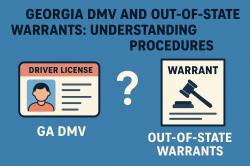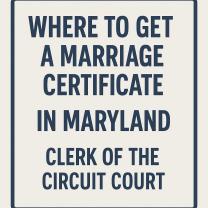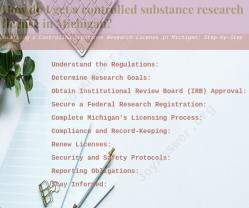How are inmate names and register numbers verified?
Verifying inmate names and register numbers typically involves accessing official records or contacting the relevant correctional facility. The process may vary depending on the facility and the purpose of the verification. Here are common procedures for verifying inmate names and register numbers:
Contact the Correctional Facility:
- If you need to verify an inmate's name and register number, the first step is to contact the correctional facility where the inmate is incarcerated. You can typically find the facility's contact information online or through a directory.
Provide Necessary Information:
- When contacting the facility, be prepared to provide specific information about the inmate, such as their full name, date of birth, and any other identifying information you may have. The more details you can provide, the easier it will be for the facility to locate the inmate's record.
Request Verification from the Facility:
- Once you've provided the necessary information, request that the facility verify the inmate's name and register number. The facility's staff can access their records and confirm the inmate's details.
Visit the Facility in Person:
- In some cases, it may be necessary to visit the correctional facility in person to verify an inmate's name and register number. If you choose this option, be sure to bring proper identification and any relevant information about the inmate.
Contacting Law Enforcement or Legal Representatives:
- If you're trying to verify an inmate's name and register number for legal or law enforcement purposes, you may need to work with legal representatives, such as attorneys or law enforcement agencies, to obtain the information through the appropriate legal channels.
Check Online Databases (If Available):
- Some correctional facilities or law enforcement agencies provide online databases or inmate locator tools that allow you to search for and verify inmate information. If such a tool is available, you can use it to search for the inmate's name and register number.
It's important to keep in mind that inmate information is typically protected for privacy and security reasons. Therefore, verification procedures are often subject to legal and administrative regulations. If you're seeking inmate information for a specific purpose, make sure to follow the appropriate procedures and provide any necessary documentation to support your request.
Additionally, be aware that the process and policies may vary from one correctional facility to another, so it's important to contact the specific facility or agency that has custody of the inmate for accurate and up-to-date information.
Verifying Inmate Names and Register Numbers: Corrections Procedures
Accurate identification of inmates is crucial for maintaining order, security, and proper record-keeping within correctional facilities. To ensure accuracy in inmate identification, corrections facilities employ a multi-step verification process:
Initial Identification: Upon intake, inmates are thoroughly identified through various means, including photo ID, fingerprints, and social security number verification.
Register Number Assignment: Each inmate is assigned a unique register number, which serves as their primary identifier throughout their incarceration.
Name Verification: Inmate names are carefully checked against multiple sources, including official documents, booking records, and previous incarcerations, to confirm accuracy.
Cross-Referencing: Information from various sources, such as intake forms, medical records, and visitation logs, is cross-referenced to ensure consistency and identify potential discrepancies.
Regular Verification: Inmate identification is routinely verified throughout their incarceration, including during cell checks, transfers, and medical visits.
Maintaining Accuracy in Inmate Records
Maintaining accurate inmate records is essential for effective corrections management and ensuring the rights of inmates. Corrections facilities implement various procedures to uphold data integrity:
Data Entry and Review: Strict data entry protocols are followed to minimize errors, and all entries are reviewed by multiple personnel before being finalized.
Regular Audits: Regular audits are conducted to identify and correct any discrepancies in inmate records.
Secure Data Storage: Inmate records are stored securely to prevent unauthorized access and data manipulation.
Access Controls: Access to inmate records is restricted to authorized personnel, and a record of who accessed and modified data is maintained.
Challenges and Solutions in Inmate Identification
Inmate identification can be challenging due to:
Inaccurate or False Information: Inmates may provide false or inaccurate information to intentionally mislead authorities.
Similar Names: The existence of individuals with similar names can lead to misidentification.
Alias Usage: Inmates may use aliases or nicknames, making it difficult to verify their true identity.
Incomplete or Missing Records: Incomplete or missing records can hinder accurate identification.
To address these challenges, corrections facilities utilize:
Biometric Identifiers: Biometric identifiers, such as fingerprints and facial recognition, provide a reliable and accurate means of identification.
Information Sharing: Collaboration among law enforcement agencies and corrections facilities facilitates access to comprehensive inmate information.
Standardized Identification Procedures: Standardizing identification procedures across different facilities ensures consistency and reduces errors.
Training and Awareness: Regular training for corrections personnel on identification techniques and procedures helps prevent errors and maintain accuracy.
Legal Implications of Inmate Identification Errors
Inaccurate inmate identification can have serious legal consequences:
Wrongful Detention: Misidentification can lead to the wrongful detention of an individual, violating their constitutional rights.
Failed Investigations: Errors in inmate identification can hinder investigations and lead to the identification of the wrong suspect.
Security Breaches: Inaccurate identification can compromise security measures, allowing unauthorized individuals to access restricted areas or impersonate inmates.
Legal Challenges: Inmate identification errors can lead to lawsuits and legal challenges against corrections facilities.
Modern Technologies for Inmate Information Management
Modern technologies are being employed to enhance inmate information management and identification accuracy:
Biometric Identification Systems: Biometric identification systems, such as fingerprint scanners and facial recognition software, provide rapid and reliable identification of inmates.
Electronic Inmate Records Systems: Electronic inmate records systems allow for secure storage and retrieval of inmate information, facilitating data sharing and analysis.
Integrated Information Management Systems: Integrated information management systems provide a centralized platform for managing various inmate data, including identification information, medical records, and disciplinary records.
Mobile Technology: Mobile devices can be used by corrections personnel to access inmate information and verify identification in real-time.
By adopting these technologies, corrections facilities can improve the accuracy and efficiency of inmate identification, enhancing security, reducing errors, and protecting the rights of inmates.













